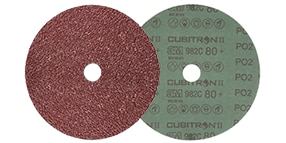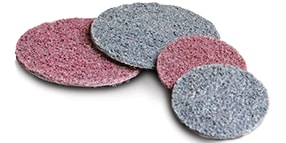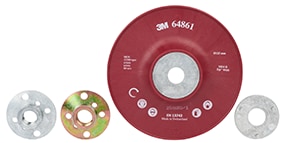-
Shop Talk - The importance of prepping metal for paint applications.
December 07, 2020
The importance of prepping metal for paint application.

The manufacturing processes involved in producing steel and iron used by metal fabricators imparts an outer surface to the material that is not conducive to paint treatments, without prior preparatory work. Surface preparation is one of the most pivotal steps in the metalworking process to achieve an attractive finished product, a requirement for ensuring the quality and duration of metal coatings. Even with skilled application and the sophisticated finishing systems available to paint metals in the market today, inadequate preparation leads to ultimate failure.
The lack of patience and time to put in the necessary ‘prep work’ significantly impacts the performance of a coating to effectively bond to the substrate. An adequately prepped surface cleans the steel to eliminate all traces of mill scale and corrosion to provide an appropriate finish capable of accepting the coating. It also extends the duration of the completed paintwork, in turn, ensuring superior protection for the working life of the component or workpiece.
Let’s talk shop: Taking the pain out of paint preparation.
When it comes to paint preparation, the most common complaint is: “Isn’t there a faster way?” Fortunately, there is. The secret lies in a powerful one-two combination: abrasives that take advantage of precision-shaped grain, and a durable, load-resistant abrasive disc that grinds and blends in a single step.
Tech tips, Nathan says:
1. You can remove a weld and prepare for paint in just two easy steps:
Step 1 - Remove the weld with 3M™ Cubitron™ II Fibre Disc 982C grade 36+
Step 2 - Finish with a Scotch-Brite™ Light Grinding and Blending Disc
2. That’s it! The surface is now ready for paint (>3 mil). No final dual-action sanding required.
Pro tips:
- Use light to moderate pressure. Excess force will generate heat and reduce life.
- For best results, use 3M Fibre discs and Scotch-Brite™ Light Grinding and Blending Discs with a 3M™ High Performance Ribbed Back-Up Pad.
- Use an angle of 5-10 degrees from the horizontal.
The 3M 2-step process in action.
Check out the video below and see how easy it can be to remove a weld and get a carbon steel workpiece ready for painting. In just two steps you can get the workpiece prepped to a paintable surface, in much less time.
3M abrasive solutions for 2-step paint prepping.
Paint prep does not need to be a time-consuming process. With the right abrasives, you can remove a weld, blend and finish to a paintable surface in just two easy steps. By combining fast-cutting 3M™ Cubitron™ II with our non-woven Scotch-Brite™ abrasive products, you can get the job done faster, reduce steps and improve your productivity.

3M™ Cubitron™ II Fibre Disc 982C
- Powered by 3M™ Precision-Shaped Grain for ultra-fast cut and exceptional life
- Ideal for blending and finishing applications like weld removal, beveling, edge chamfering and more
- Optimised for use on mild steel, high nickel alloys and superalloys

Scotch-Brite™ Light Grinding and Blending Disc
- Constructed with 3M™ Ceramic Aluminium Oxide Blend Abrasive Grain, for an aggressive cut, long life and consistent finish
- Ideal for light stock removal and aggressive blending operations to produce a burr-free and paintable finish, in a single step

3M™ High Performance Ribbed Back-Up Pad
- Unique, optimised rib pattern, resistant to temperatures over 100 degrees Celsius
- Used in conjunction with 3M Cubitron™ II Fibre Discs and Scotch-Brite™ Light Grinding and Blending Discs
- Offers improved disc life and cut-rate resulting in lower cost and higher throughput
If you have any questions or for more information about the 2-step process and the 3M abrasives range to meet the needs of your specific application contact your 3M Abrasive System Specialist or explore our Industrial Abrasives & Finishing products.
About Nathan Bamford.
Nathan Bamford is 3M’s Application Engineer for the Abrasive Systems Division, Australia and New Zealand. He provides technical end user guidance and advice around the selection, use and maintenance of abrasive products and systems.
Nathan has a Bachelor of Mechanical Engineering and has been with 3M for ten years across a variety of businesses, from Automotive OEM, Industrial Adhesives and Tapes, Aerospace, and Abrasive Systems.
Nathan has a fascination with how things work and possesses extensive experience, knowledge and skills in optimising processes. He is passionate about how using quality abrasive products can improve both efficiencies and safety.
